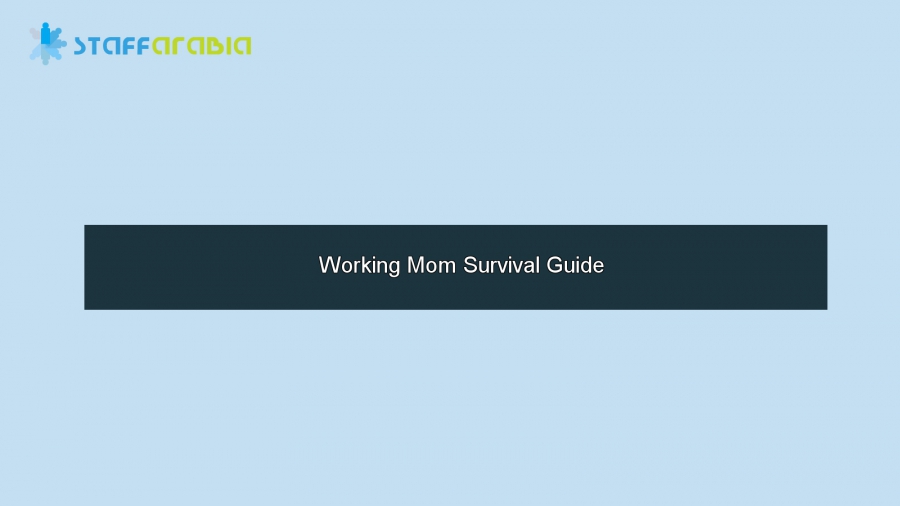
Take a look inside and ask yourself, “Am I having fun?” You can find moments of joy in unexpected places—as long as you’re paying attention.
You’ve had a pretty good week. The triumphs might include getting your kids to preschool for circle time and achieving professional nirvana when a client approves that never-going-to-end project. But what about you, personally? Are you doing things for yourself that make you feel … wait for it … happy? This is a big one, and it affects the whole family. Your state of mind—from the moment that little egg and sperm gave a cosmic thumbs-up and formed a human being—has a direct effect on your children. the good news: 82% moms in our recent Working Mother survey say they feel happier since becoming parents. only 4 percent are less happy (14% feel about the same). Wherever you fall on this spectrum, upping the happiness factor will make you a better mom. Here are some strategies for tending to your emotional life.
The “Good Enough” Mom
When more moms joined the workforce, we heard all about the “supermom.” A revolt against all those high expectations brought about the “slacker mom.” Now we’re hearing again about the “good enough mother,” a term coined more than 50 years ago by Dr. D. W. Winnicott, a British pediatrician, sociologist and psychoanalyst. He said the key role of the good enough mother is to adapt to her baby, which gives him a sense of control and the comfort of being connected with his mother.
A mother’s attunement to her infant enables him to become more imaginative, playful and spontaneous—and to grow to be his true self. A mom doesn’t need superior skills to nurture her baby, according to Dr. Winnicott, just an ordinary ability to tune in to her baby’s needs and do what it takes to meet them.
When the term “good enough mom” is used today, it grows out of the idea that most moms have everything their kids need inside themselves already. The good enough mom uses her own best judgment, is available to her child, learns from mistakes and loves her child, though not necessarily all of his behavior. Still, today’s working moms can have such high—often unrealistic—standards that they can wind up feeling not “good enough” at all.
Keep in mind that there’s no single right way to do things, so you don’t need to worry that you’re doing it wrong and damaging your child. Your baby doesn’t need a perfect mom, even if there were such a person. A good enough mom:
Makes time with her kids a priority. If the choice is ironing or playing with your daughter, pick playtime.
Doesn’t compare herself to other moms, especially stay-at-home moms! It may look rosy on the other side of the motherhood fence, but you don’t know their real stories.
Accepts limitations. There are no perfect moms and no perfect kids. When we accept our own limitations, we can better accept our kids’.
Staying in the Moment
One of the biggest working-mother myths about multitasking is that it helps us get more done. This is only the case when the tasks don’t require much concentration—like setting the table while talking on the phone. But if your child asks what “s-e-x” means, you don’t want to be chopping veggies at the same time. we deplete ourselves when we multitask on high-concentration jobs—like when your boss asks you to revise a budget. So multitasking can actually lead to burnout.
The truth about focusing on one thing at a time and living in the moment is that it makes us more productive and happier. Yes, you’re pulled in many directions at once, but if you choose one direction at a time, you’ll be more effective and less stressed. At work, try for what psychologists call “flow,” immersing your mind fully in one activity. At home, take time to give your kids your full attention—they need it.
Stress Busters
if you’re walking around with a stiff neck and a knot in your stomach, and your personality is always set on irritated, it’s time to do something about your stress level. This doesn’t require two hours of meditation daily or locking yourself in an isolation chamber. There are simple things you can do to conquer stress.
Exercise. Yes, we know you barely have time to pee, let alone put on your sneakers. Which is why all we’re asking is that you commit to ten minutes. That’s it. Do something easy, like walk around the block or flip on a fitness channel and join in or pick up a couple of soup cans and pump. Try to find something you like and stick with it. If you’re done after ten minutes, fine, but chances are, you’ll say, “I can do another ten!”
Get physical. When you’re under pressure—plugging away on a particularly difficult project at work, or coping with your child who is going through a “stage”—try to find a physical outlet for your frustration, preferably one that lets you smash and bash things, like kickboxing.
Express yourself. When you feel your emotions building, vent to a friend who’s good at talking you down, or simply confide in your dog.
Keep your perspective. Recognize a situation for what it is. If you’re fuming because the train is late, again, remind yourself that this is one of the many things that are out of your control. Try to belly breathe.
Limit sugar and caffeine. Too much of these stimulants can leave you feeling tired, cranky, and like a stick of dynamite. Stay hydrated. taking a sip of water can be amazingly calming.
Worrying Less
Fretting over your kids’ safety, your career decisions, your relationships and your overloaded schedule is bound to happen from time to time. but worrying, which can be an appropriate emotion depending on the circumstances, can become destructive when left unchecked. if you feel persistently anxious, call your doctor. In the meantime, try one (or all) of these strategies to help ease anxiety.
Write down your worries in two columns: “Things You Can Control” and “Things You Cannot Control.” This can help you identify when to try to let go and when to act.
If journaling isn’t for you, try talking it out with your partner or a friend. the goal isn’t to dwell on your worries but to acknowledge them, expose them to the light of day and let them pass. Think of worries as toxins, then find a way to get them out.
For the things you can control, or at least influence, such as saving for your child’s college education or keeping your family healthy, come up with action plans. Start a college savings account, no matter how small. make an incremental change in your lifestyle, such as going for a family walk after dinner or switching to organic produce. Taking action to battle a fear can help you feel better.
For the things you cannot control, such as natural disasters, accidents or the nation’s economy, indulge in your fears, but only for five minutes. Cry, pace or stew, and then move on. Visualize your worry by picturing it as a balloon floating away or a log floating downstream. when you can no longer see it, get on with your day.
When You Feel Overwhelmed
Bombarded by demands, expectations and deadlines, it’s easy to feel like we’re facing more than we can handle at times. Here, five steps that will take you from paralyzed to powerful:
1. Make a list. Jotting down everything you need to do helps you see the true scope of what you’re facing. For each item, write steps you need to finish it, then focus on what the next step is. Consider crossing off tasks you feel you should do but don’t want to do.
2. Ask Yourself, “What matters most?” Set priorities based on importance and urgency—what needs to happen today, what can be done next week and what you can put off indefinitely.
3. Focus. Once you’ve picked a task to complete, practice total engagement. Turn your phone to mute and shut down email so you can give it your full attention.
4. Set time limits. Dedicate a certain amount of time (say, 20 minutes) to each task. Set a timer and stay put until you hear the ping.
5. Just say no. Practice saying “no thank you” politely and firmly and with as few words as possible. Whether turning down a business-lunch invitation or a playdate for your son, don’t justify the no with a detailed explanation. Still not comfortable saying no? Try saying “I wish I could, but”—it’s a softer version.
–From the new book, Working Mom Survival Guide: How to Run Around Less & Enjoy Life More.















